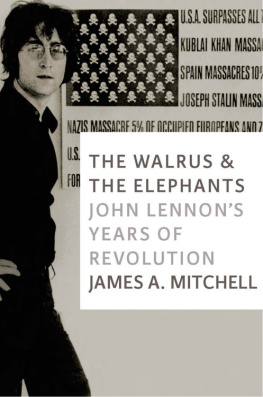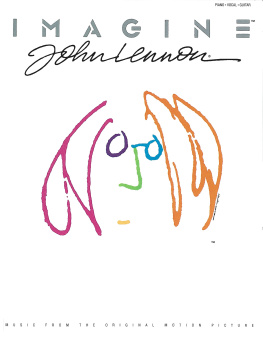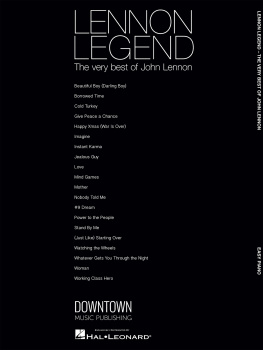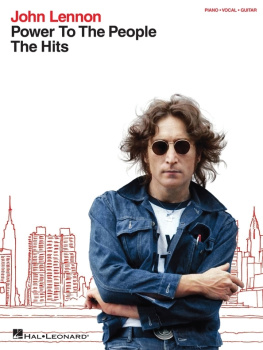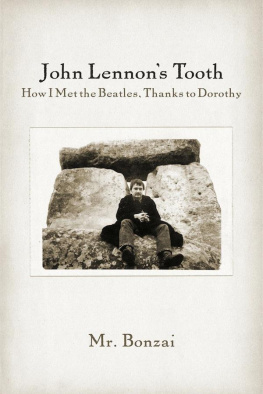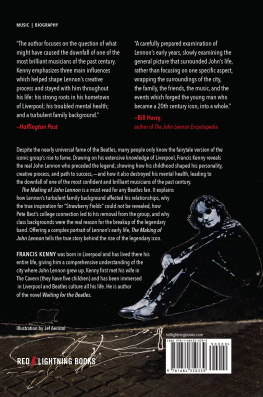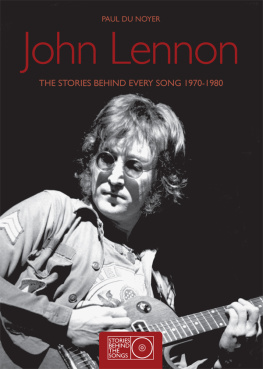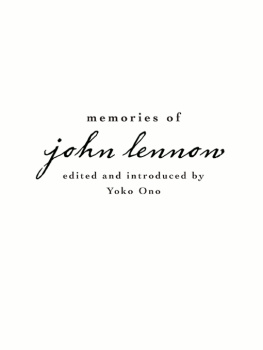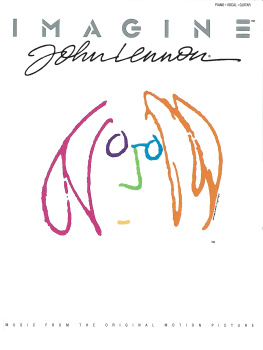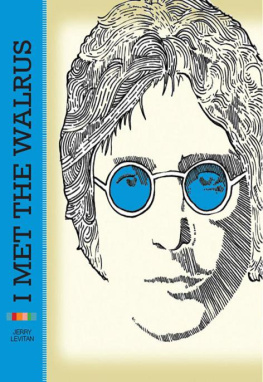THE WALRUS & THE ELEPHANTS
JOHN LENNONS YEARS OF REVOLUTION
JAMES A. MITCHELL
Seven Stories Press
New York
Chapter 5
Wordplay
John and Yoko... face deportation. Deportation is usually reserved for high-ranking Mafia officials. Dick Cavett
On May 2 , 1972, the day of the restraining order that allowed John and Yoko to remain in the US for the time being, J. Edgar Hoover died.
The impact of Hoovers death far exceeded the usual disruptions caused by the sudden loss of an agencys top man; the position Hoover had created for himself over half a century inflated the job to one whose power was surpassed only by the office of the president; some questioned at times who truly held more.
Hoover first chaired a department named the Bureau of Investigation in 1924; in 1935 became first-ever director of what had been rechristened the Federal Bureau of Investigation. Through Prohibition, World War II, the McCarthy fifties, and the civil rights era, Hoover held unprecedented authority in Washington, power that grew with each commander in chief he served.
Hoovers many critics said he interpreted his job as heading the Bureau of Intimidation for his legacy of harassment of Communists, subversive elements, homosexuals, dissenting voices, and anyone else he thought unpatriotic. When conventional information-gathering tactics werent enough he created additional resources and authority: it wasnt until 1971 that the American public learned of Cointelpro, Hoovers counterintelligence program launched in 1956 to seek out dissenting political opinions, what many would call unwarranted spying. Targets in Hoovers crosshairs ranged from Charlie Chaplin to Martin Luther King Jr. to John Lennon; the former Beatle was one of Hoovers final projects.
To succeed Hoover, Nixon appointed L. Patrick Gray as the bureaus acting director. A retired Navy captain turned lawyer, Gray served as a congressional liaison with the Pentagon before he accepted a 1970 Department of Justice appointment. The acting director assumed ownership of Hoovers many streams of correspondence, although Associate Director Mark Felt supervised day-to-day Bureau operations.
Among Hoovers final memos were those involving John Lennon. Day one for Gray included a May 3 update on Lennons deportation. Any hopes Hoover might have had for a low-key, discreet investigation and forced departure were long gone. Gray inherited a very public battle that would be played out in the newspapers and on national television.
John and Yoko were here once before, Dick Cavett introduced his guests. They face deportation. Deportation is usually reserved for high-ranking Mafia officials.
So began a May 11, 1972, appearance by the Lennons on the Dick Cavett Show , a late-night talkfest helmed by the Nebraska-born writer-comedian. Through the 60s Cavett had written jokes for Jack Paar, served as a game-show panelist, and hosted a morning chat show before taking a late-night slot opposite Johnny Carsons Tonight Show . Cavetts intellectual inclinations made finding his place on network TV a challenge.
That his guests might be controversial was by design rather than accident; Cavett pursued and welcomed on-air talk more substantial than plugging a new movie, song, or TV show, including a notable June 1971 debate on Vietnam; arguments for US withdrawal by Veterans Against the War leader John Kerry clearly outscored a we will win approach. Cavett recalled the backlash in Talk Show , including President Nixon reportedly asking, Is there any way we can screw [Cavett]? There must be ways.
Well regarded among rocks elitevisitors to his stage had included Jimi Hendrix, Janis Joplin, and a fresh-from-Woodstock Stephen StillsCavett had eagerly accepted an invitation in the summer of 1971 to meet with John and Yoko in their temporary St. Regis hotel quarters. They struck a show business quid pro quo: Cavett gamely appeared in one of the many short films made by the Lennons; John and Yoko agreed to guest on Cavetts show and did so for the first time in September 1971. The episode was all talk, no tunesa free-flowing conversation that took more than the allotted airtime and was broadcast over two nights. Cavett wasnt about to cut short reflections on a decade by a Beatle; they had been, he said, the most written about, most listened to and most imitated musical group of the 60s... unequaled in affecting a decade of what young people looked like and thought about.
That was then, Lennon said. He enjoyed the ride and was proud of the work, but was now ready for life as an adult, not a teen idol: When you grow up, we dont want to be dragged on stage playing She Loves You when youve got asthma and tuberculosis when were fifty. I said I didnt want to be singing She Loves You when Im thirty; I said that when I was twenty-five which in a roundabout way meant I wouldnt be doing whatever I was doing then at thirty.
As he said in January 1971 when interviewed by Red Mole and Rolling Stone , Lennon again pledged his commitment to the Movement on the Cavett show, discussing the roles of youth protest and civil disobedience.
I dont believe in violent revolution, which is playing the same establishment games, Lennon clarified. Were revolutionary artists, not gunmen. Im still for peace, but Im an artist first, politician second.
Lennon pointed out that even among supporters of the same cause there were disagreements as to how the goals could be achieved. Equally puzzling was how people who supported pacifist ideals had such disparate ideas about how to stage a proper protest; at the time he had yet to meet David Peel, the Elephants, and Jerry Rubin.
A lot of people say, We dont want you to demonstrate for peace that way; we want you to do it our way, Lennon reflected.
Eight months later in 1972, Lennon would have another Cavett-hosted conversation, ready to talk about getting involved, life under federal surveillance, and the definition of a controversial word in his new song.
Before he even took his seat upon returning to Dick Cavetts stage in May 1972, John Lennon unknowingly violated a television taboo.
He didnt realize his somewhat minor mistake, a by-product of his flawed eyesight. Network rules held that guests on the show were not allowed to endorse a political candidate by name. Prior to Lennons segment the first half of the program featured actress Shirley MacLaine, who was campaigning that year on behalf of a Democratic presidential hopeful. Equal-time considerations prevented MacLaine from specifically naming her candidate of choice.
Lennon was introduced, strolling onstage with a wave to the audience before shaking hands with Cavett and MacLaine. He noticed a small campaign button she wore, and leaned toward her for a closer look.
Whats his name? Lennon asked, squinting at the badge. Oh, McGovern. I thought it said McCartney. Bad eyes, you know.
Thus was solved the not-much-of-a-mystery as to which candidate MacLaine had been talking about for the past half-hour.
You can say it, MacLaine laughed. Youre leaving anyway.
That, too, was probably something the network executives would have preferred not to be discussed on a talk show; government policy and court cases were best left to the news programs. Cavett, however, encouraged such debate. MacLaine had shared her experiences on the campaign trail, how people across the country were smarter than some wanted to believe. They want to be told the truth, MacLaine said. People think corruption is synonymous with leadership, and that an honest person cant govern.
Cavett was up-front with his interest in Lennon, and had previewed his guests status during the shows opening: Not only is it interesting to see them perform, but theyre involved in a crucial court case to determine whether they can remain in the country or face deportation.
Next page
